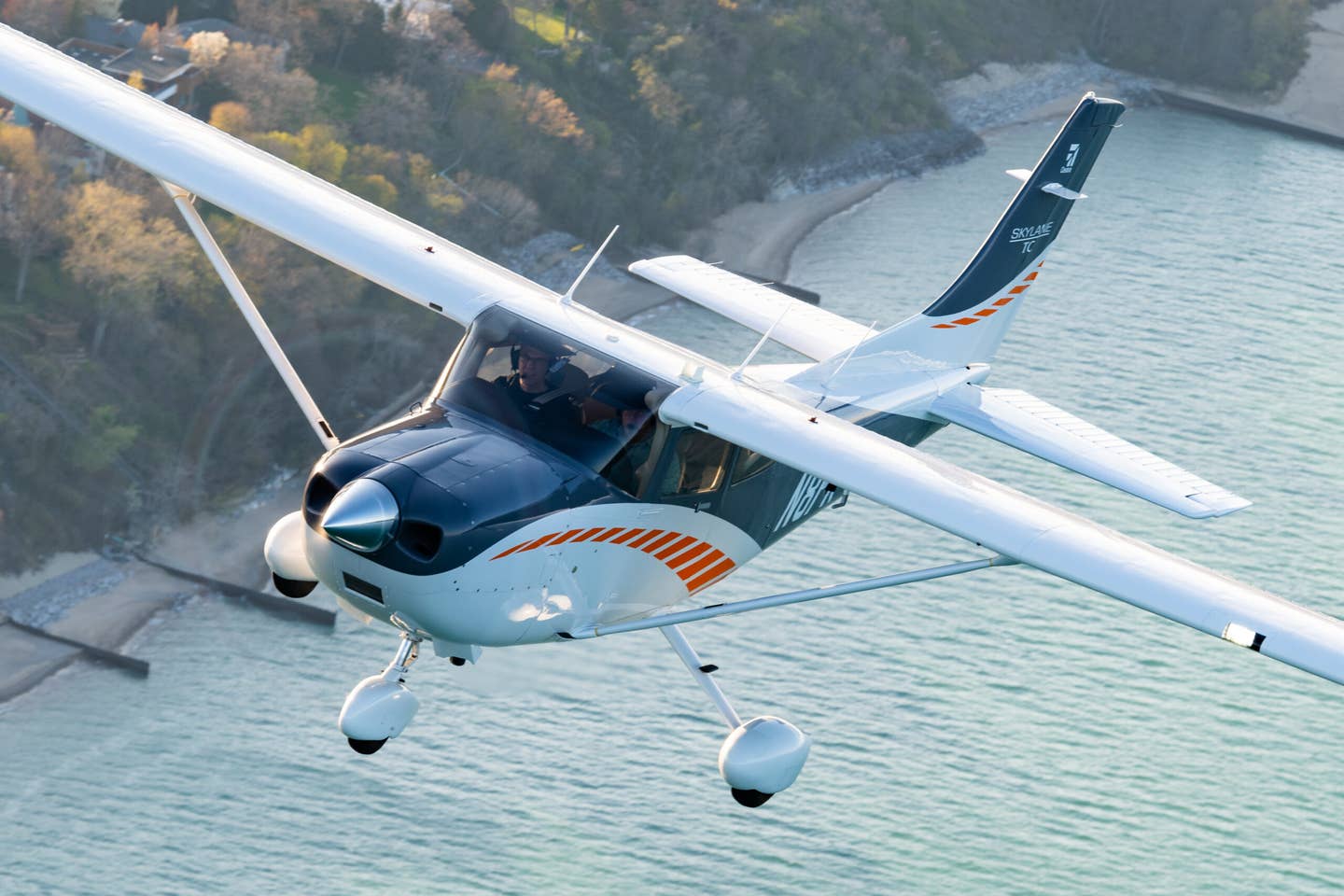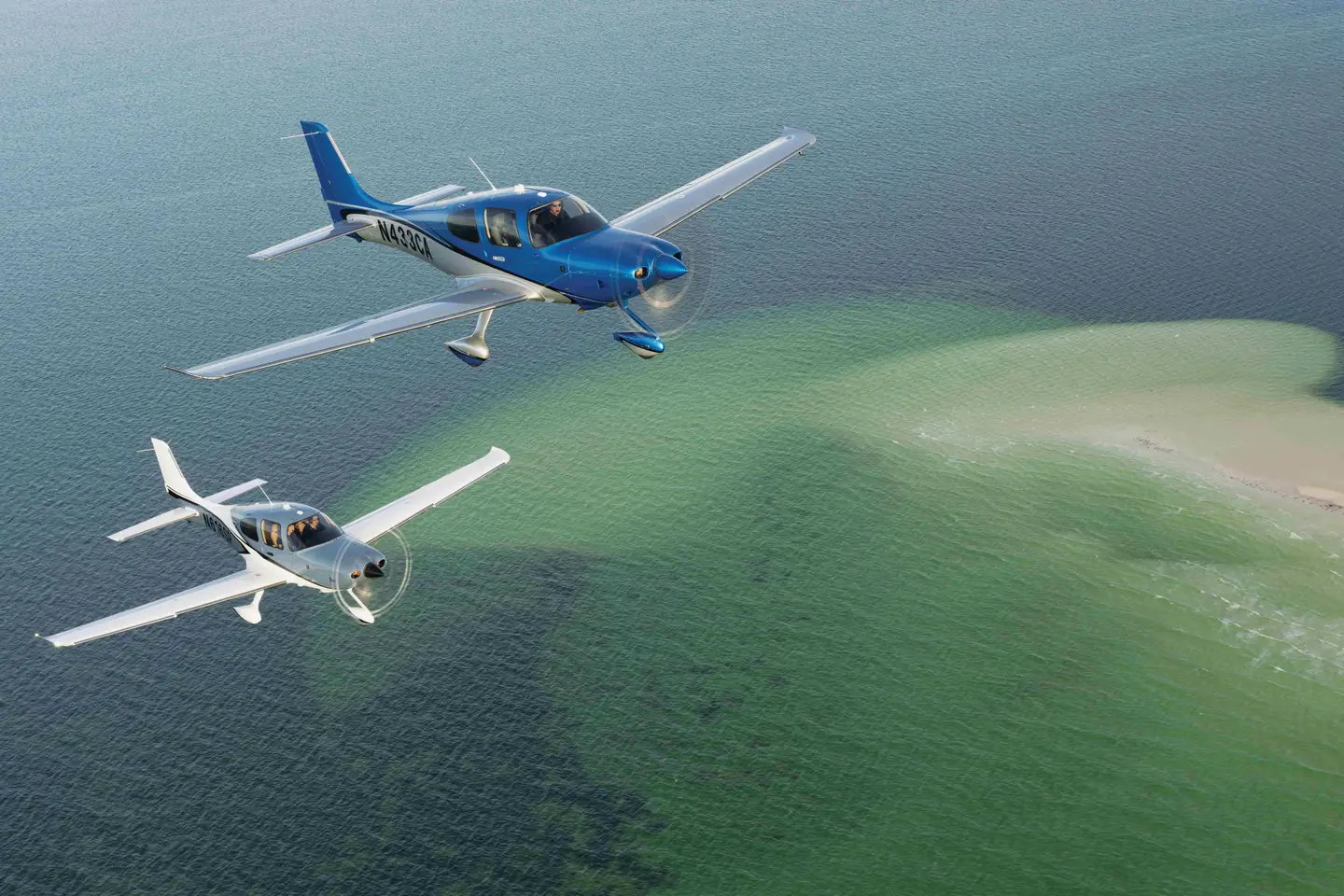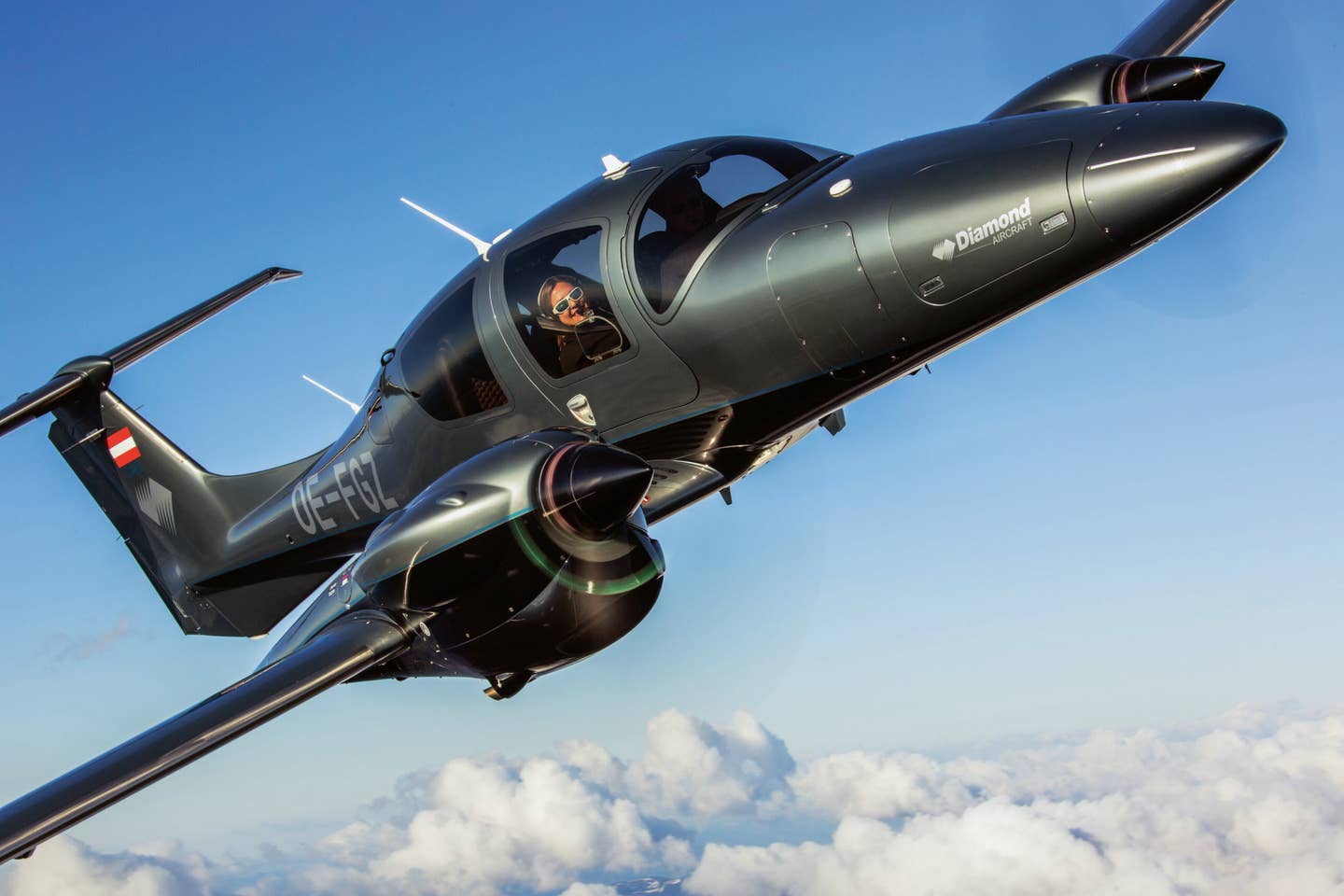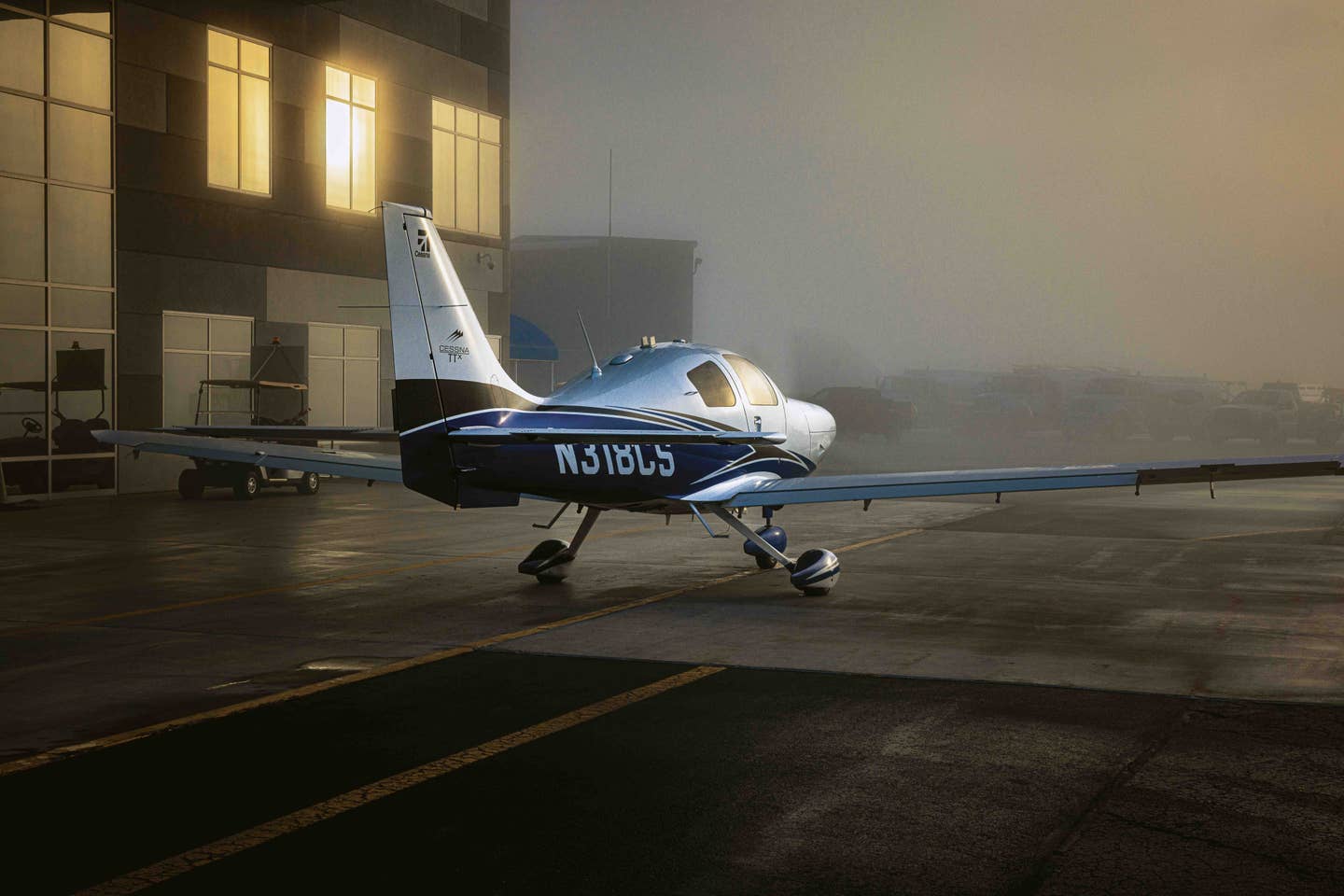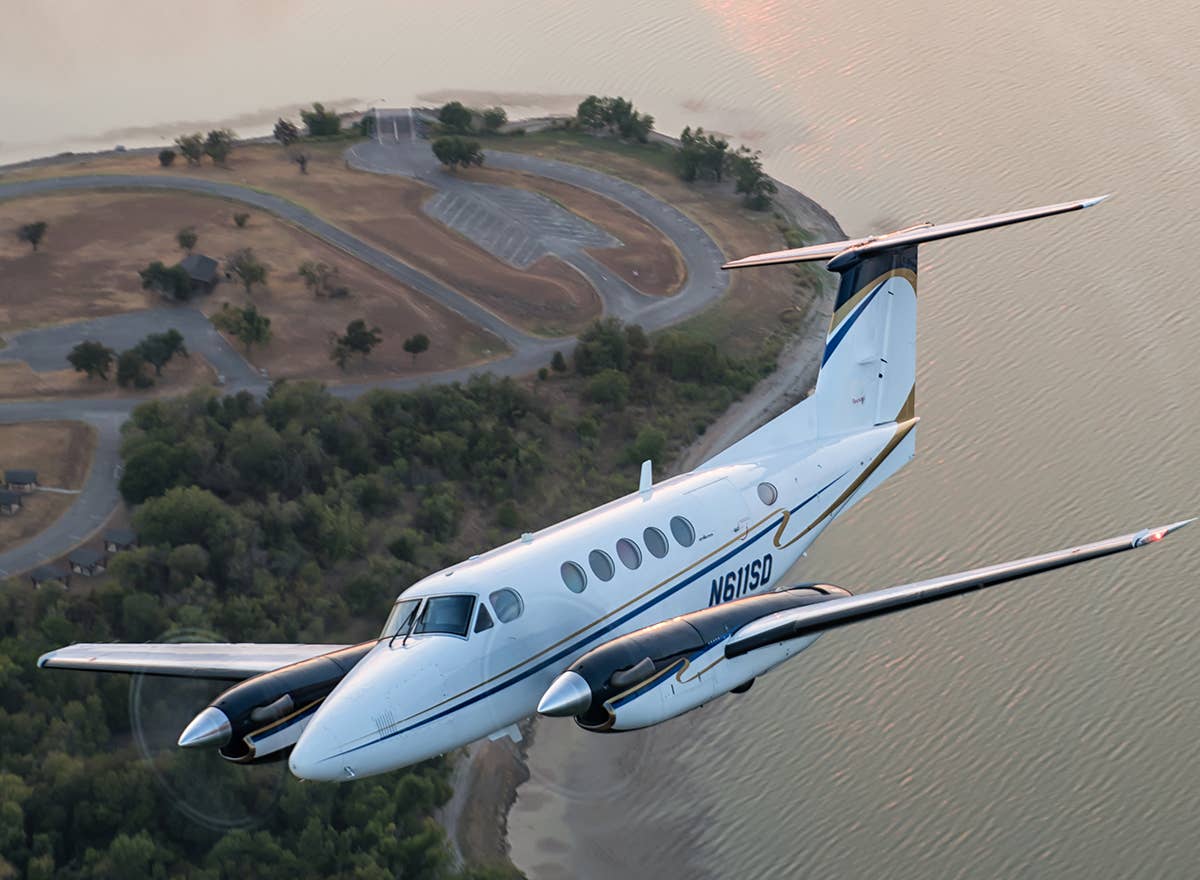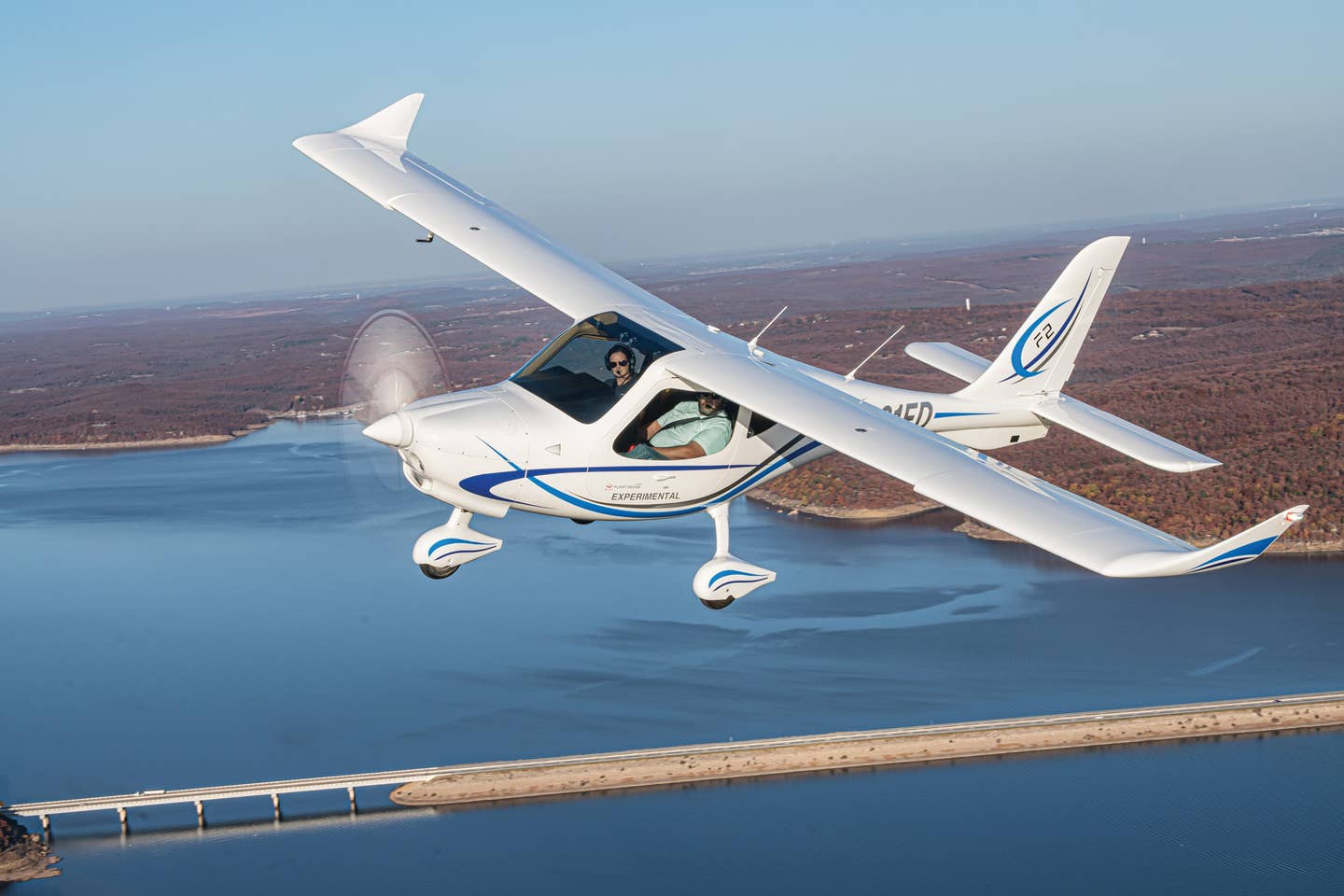
The clean-sheet design that comprises the F2 comes from the rebirth of the company that created it. Glenn Watson
The angle of attack readout on the PFD wasn’t the first thing that caught my attention. No, that would be the unending cry of the audible stall warning as we just couldn’t catch a break. We began a steady descent, nose high, and slowed somewhere below 39 knots.
We were flying rather well, all things considered; I could maneuver the F2 around within this part of the envelope, practically begging it to fall off and drop its nose past the horizon. It didn’t comply. Instead, with a little push of the stick and throttle, we flew right out of the deep end of the slow flight regime as soon as the airplane was asked.
The Flight Design F2 reflects well the aerodynamic understanding and advanced avionics technology driven into the design. After the company’s CT series gained a reputation as a somewhat fussy airplane to fly, the F2 turns that impression on its head.
1. The 10.6-inch screens can show a full-screen PFD and engine cluster, as well as split into various PFD, MFD or engine-indication formats.
2. An optional Garmin G5 supports the main hardware with a solid backup. A Garmin GFC 500 autopilot can be installed as well.
3. Panel-mounted AmSafe air bags are a unique feature in the class, and they complement the standard BRS ballistic airframe parachute.
4. A Garmin GMA 342 audio panel and Garmin 345 ADS-B In and Out system completes the fully stacked flight deck.
5. The single-lever throttle-and-brake system simplifies power management both on the ground and in the air.
New Ownership
The clean-sheet design that comprises the F2 comes from the rebirth of the company that created it. Flight Design evolved from a small business building ultralights and gliders into an airplane manufacturer in 1988, managed by its founder and visionary leader, Matthias Betsch. However, financial troubles dogged its existence, and while the CT series of microlight (in Europe) and light-sport category (in the US) aircraft proved reasonably successful in both the US and Europe (see sidebar), new designs were hard to fund and get off the ground.
Those fortunes changed in 2017, when Flight Design was purchased by Lift Air, a division of Lift Holdings and financially supported by Lindig Group, an industrial manufacturer in Germany. With a new infusion of capital and leadership under managing director Daniel Guenther, Flight Design began the development program on the two-seat F2 series and a four-seat F4. The new models debuted at Aero Friedrichshafen in 2019.
Siemens has joined forces with Flight Design to support an electric version, the F2e, with a proof of concept that debuted in summer 2019. But the first out of the gate will be the traditionally powered F2. As of November 2020, P2—the second prototype of the standard F2 flown for this report, which will meet light sport aircraft standards—has a couple hundred hours on it. The third conforming prototype, P3, is finished and flying in the Czech Republic, and it’s being used to secure European Union Aviation Safety Agency CS23 approval (the rough equivalent to the FAA’s Part 23). The model is now officially in production, and Flight Design expects to have them in the US by the end of January. The F4 project is funded, in development, and projected to debut stateside in summer 2022.
The production quality has kicked up a notch, too, for the all-carbon-fiber airframe. Next-gen CNC machined molds are used to make the fuselage in two pieces—the left and the right sides match exactly. Weight savings derived from the switch to Hexcel pre-preg carbon fiber—reducing the amount of epoxy and filler used—pencil out into a higher useful load on an already generous figure for the LSA category.
“Safety sells the airplane,” Tom Gutmann Jr. says. The Gutmanns—Tom Jr. and Tom Sr.—have been with Flight Design since the aircraft were first imported under the new S-LSA guidance in the US. “We’ve worked together for 18 years. They’re really hardworking and cheerful,” says Tom Peghiny, principal of Flight Design USA. The Gutmanns’ company, Airtime Aviation, in Jenks, Oklahoma, has been the distributor for the central and mountain US since the beginning of Flight Design’s tenure stateside. Flight Design USA serves as the importer and distributor for the northeastern US. A network of dealers spans the country.
The Gutmanns have seen the results of better manufacturing, reporting closer fit on the doors and cowling in particular, which bodes well for maintaining the airplane more easily in the field. The F2′s wider than the CT series too, according to Tom Jr. With a standard BRS ballistic recovery parachute and an AmSafe air-bag system, safety is indeed part of the F2′s DNA.
The main landing gear saw an overhaul as well: Instead of separate gear legs attached to the left and right undersides of the fuselage, a single carbon-fiber strut carries through the belly. The result is much better dampening on landings, which I experienced firsthand during my initial touchdowns during our flight test. This should help the F2′s placement in a flight school lineup, mitigating student errors that the previous designs may have exacerbated.
The Walk-Around
From a few feet away, aerodynamic twists such as the elegant upswept wingtips point to the F2′s potential to handle well at low speeds. A leading-edge cuff on the outboard portion of each wing speaks to this, as do the bigger horizontal stabilizer and sizable vertical fin. The CT series had a stabilator, which contributed to the finesse required to land it well. The F2 moved to a separate elevator system that is split into left and right halves with a “beaver tail” in between.
Hidden beneath the wing structure lies another big change: The F2 has a carry-through spar running the full span, rather than the overlapping two-spar system in previous models. A rugged cockpit capsule in the fuselage continues the Flight Design’s legacy of crashworthiness.
Up front, the powerplant remains the same—the fuel-injected Rotax 912 iS—but Airtime is testing new propeller combinations. The latest one, from Sensenich, has a sexy scimitar sweep to its tri-blade tips. The team had 10 hours of testing on the new propeller when we flew the airplane, and more testing is needed.
There’s another advantage to the Sensenich prop as well: “We’re trying to increase the US content on the airplane,” Peghiny says. “There’s no downside on US equipment, and it helps insulate the retail price from currency fluctuations. It’s nice to say 45 percent of the aircraft is made in the US—but it also insulates us.”
The oil system has a dry sump, which means that unless the engine has been running, the oil won’t register in range on the dipstick even when there’s enough oil in the system. A “Rotax burp” to move oil up into the system becomes part of the preflight on the first flight of the day, or after it’s been parked a while. A split intake serves both the oil-cooled and water-cooled portions of the engine.
Other than that, there are no real surprises on the preflight. Soon enough, we’re ready to strap in and see how the F2 flies.
First-Flight Impressions
Tom Jr. pointed out a couple of key differences in the F2 cockpit, as compared with other light single-engine piston airplanes. First, the throttle is a single lever—and it also serves as the brake.
Come again?
A full-forward push of the lever gives the pilot full power, as you’d expect. Bringing the throttle back reduces power to idle and then, at the very rearward portion of the throw, engages the hydraulic disc brakes on the main wheels. A valve aft of the throttle charges the system to set a parking brake when needed for a run-up and other actions on the ground.
We started up the Rotax, and I found the system worked surprisingly intuitively once I was taxiing along. Instead of tapping a brake on one side to tighten a turn, I used the steerable nosewheel. Having the system set up this way means you never have a pilot applying power with the brakes on. I weaved my way down the taxiway at Airtime’s home base at Richard Lloyd Jones Jr. Airport (KRVS)—known as Riverside—to feel the responsiveness of the steering prior to taking it onto the runway for the first time.
Following a run-up and ticking items from the checklist, we were cleared for takeoff on Runway 19L. The Rotax ran up to 5,300 rpm as we started the roll—it goes into the yellow arc at 5,500 rpm—and when we got to 50 knots indicated, I started to squeeze back on the stick, and we were soon airborne. We used less than a third of the runway, and I wasn’t even going for best short-field effort on this first takeoff run.
Climbing out at the current VX of 60 knots took us up at more than 600 fpm, steeply angled, while a best rate of climb around 72 knots gave us better than 800 fpm. We needed to stay below the top of the Class D at 2,500 feet msl for a moment, so I dialed it back as we headed for a practice area southeast of the airport.
Cruise-climbing up to 3,500 feet once we were free of the airspace, I gave us some clearing turns and enjoyed the fresh roll rate I got from the ailerons. Rudder coordination was almost too easy; I found that it doesn’t take much thought to keep the ball centered, even as we progressed into exploring slow flight and a stall series. And here’s where all the aerodynamics work really has paid off: I tried to mishandle the airplane with that warning sending solid beeps into my headset, but it’s just really hard to make the F2 misbehave.
A power-on stall—even after I slowed it down to 60 knots before the addition of full power—took us skyward, and we were up at such a deck angle before the airplane entered the stall that both Tom Jr. and I expressed how hard it would be to work yourself into that situation. Sure, it can be done, but between the AOA meter on the PFD flashing red arrows and the other cues, it’s hard to imagine getting there unintentionally. The controllability of the airplane in this regime stays positive.
We needed to head back down in order to return to Riverside’s traffic area, so I set up a glide at VG as notched on the airspeed tape. At 75 knots and power to idle, we came down at 800 fpm. Final flap positions were not yet set, but I had a total of 33 degrees to work with on a sliding scale. We used about 16 degrees for takeoff, and that amount could be put in below 90 knots to help slow us down for landing.
Coming into the pattern, the tower sequenced us in between the Pipers flown by the locally based Spartan College, and I found myself high on the VASI for the first landing. At least I was fast too, but getting the F2 below 75 knots for landing isn’t hard once full flaps go in. The last few degrees, in fact, translated into a progressively higher sink rate. My slightly fast touchdown around 65 knots wasn’t bad—but the gear gave me an assist. We did three more touch-and-goes easily on the 4,208-foot runway, and on each one, I got it more dialed in, finding I liked 65 knots on short final, to bleed off to just below 55 for touchdown. Exact specs for landing speeds are a work in progress at press time, but my senses tell me that feels about right.
The F2 demonstrates what’s achievable within the LSA parameters bounding its high and low speeds. With a stall speed (full flaps) at 39 knots, we also see a true airspeed as high as 133 ktas in my cruise-speed test—knowing that the final airplane will conform to the US LSA standard maximum speed of 120 knots indicated. Peghiny sums up the airplane well, “It’s what our customers need: It goes fast, looks cool and is easy to fly.”
Another Look
We had a beautiful early November day for our flight test, and that was a good thing because we needed to get photos as well for this story. After we shot the pictures over the autumn-burnished shores of Keystone Lake west of Tulsa, I flew the F2 from the right seat just to see what the perspective would be from an instructor’s standpoint. No concerns surfaced, and I found the transition to the CFI side to be seamless. With a 50-inch-wide cabin, there’s no need to be shoulder-to-shoulder with a student—though I could reach everything I needed.
I have a feeling the airplane will find a good home in training fleets because of its comfortable size, slow-flight handling and student-error-dampening new gear. In the fully equipped avionics package, having a Garmin G3X Touch flight display on the right side as well as the left helps out instructors too; instead of parallax, you have a full array of PFD and MFD info to work with. From the instructor’s standpoint, there’s another bonus stemming from the combination throttle-and-brake system: You’ll never have a student ride the brakes while applying power or touching down with the brakes engaged. With the Rotax, you can use mogas or 100LL—another potential area of savings and convenience—and the 34 gallons of fuel sipped at roughly 4.5 gph will take you a long way.
From a recreational user’s perspective, the F2 will give you everything it can in terms of load-carrying capability. There’s a lot of room for cargo, and though the LSA weight limits apply in the US, when the Part 23 version in Europe is completed, operations under that category will readily accommodate a few more pounds. The F2 comes out of the gate with the Garmin GTR 225 comm and GTX 345 with ADS-B, and owners can equip with a standby Garmin G5 electronic instrument, the GFC 507 dual-axis autopilot, and either the GTN 750XI or 650XI navcom/GPS. Sporty leather seats and automotive-style inertial-reel seat belts keep it comfortable too.
First Deliveries
Business slowed down in March and April 2020, but then the phone began to ring again at Airtime for the new and used aircraft they broker. “We had some pre-owned airplanes, and they sold out,” Tom Jr. says. As for the F2, Flight Design USA has four on order when they become available; another dealer has two, and a couple more orders are in the works, according to Peghiny. The first are expected to land stateside by the end of January. Airtime has six aircraft that they hope to have by then as well.
FAA has shown they understand the improvements the LSA industry has made. “The experiment, if it was one, has been successful,” Peghiny says. He credits the safety of the LSA industry in no small part to the Rotax engine: “If you keep fuel and oil in them, they are very reliable.”
The line blurs between light-sport aircraft and what we have considered “traditional” single-engine piston airplanes, and I expect that to continue as technology and advanced design sift up through the ranks rather than trickling down. There’s no compromise in this category with the latest generation of light-sport models, and the F2 fits right in.
Flight Design F2 Specs
| Engine: | Rotax 912iS | Horsepower: | 100 hp |
| Propeller: | Neuform three-blade CR3 65-inch composite | Seats: | 2 |
| Empty weight: | 835 lb. | Max gross weight: | 1,320 lb./US LSA limitations |
| Fuel capacity: | 34.3 gal.; approved for premium automotive unleaded, as well as 91 avgas and 100LL | Range: | 850 nm at 7,500 ft., 55 percent power, 4,200 rpm and 100 kias |
| Maximum speed: | 120 kias/US LSA limitations | Cruise speed: | 115 kias |
| Stall speed (neutral flaps): | 45 kias | Stall speed (full flaps): | 39 kias |
| Wingspan: | 30.45 ft. | Wing area: | 113 sq ft. |
| Aspect ratio: | 8.2:1 | Mean aerodynamic chord: | 3.83 ft. |
| Length: | 22.5 ft. | Height: | 7.68 ft. |
| Cabin Width: | 50.5 in. | Price (as tested): approx. | $198,962 |
This story appeared in the January-February 2021 issue of Flying Magazine

Subscribe to Our Newsletter
Get the latest FLYING stories delivered directly to your inbox

